Returns on Bondora stayed strong in April, coming in-line with returns from March, and maintaining their stability in times of economic uncertainty.
As always, performance charts by country are broken down by the number of loan issuances over the given period, with Orange representing < 50 loans, Blue 51-200, and White > 200.
Bondora maintains solid returns
Even as the global economy has hit a rough patch, Bondora returns have remained steady. The cumulative return for 2019 originations came in at 20.9%, with 2018 having a 15.7% return rate, both above their respective targets. Spain continued to have the highest return rates for the past couple of years, with Finnish return rates close behind.
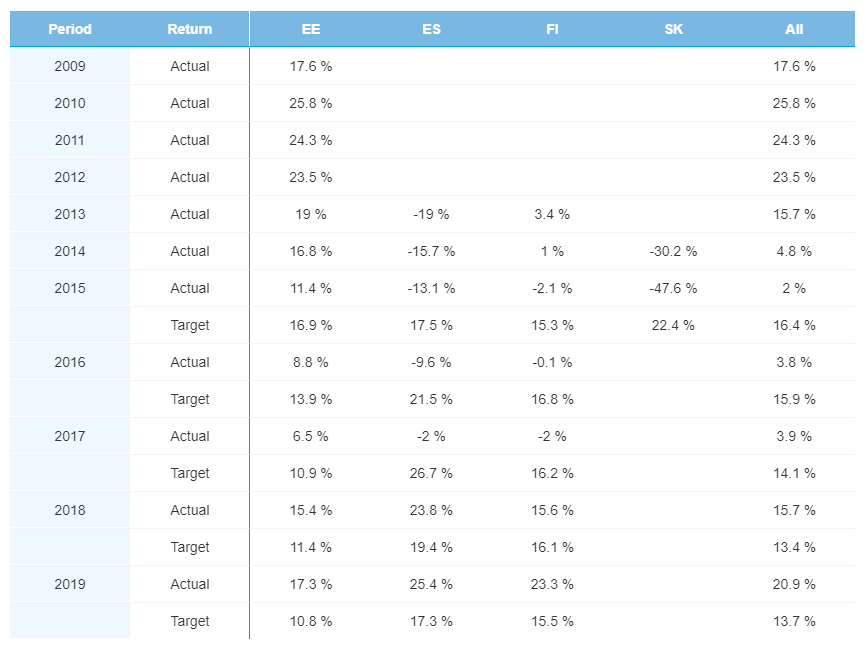
Quarterly Performance
The most recent quarter, Q4 2019, came in at a 15.7% return rate compared to 16.1% last month. Quarterly return rates for the most recent seven quarters are still above their target rates. Q2 2019 maintains the highest return rate, more than 10% above its target, at 25.0%.
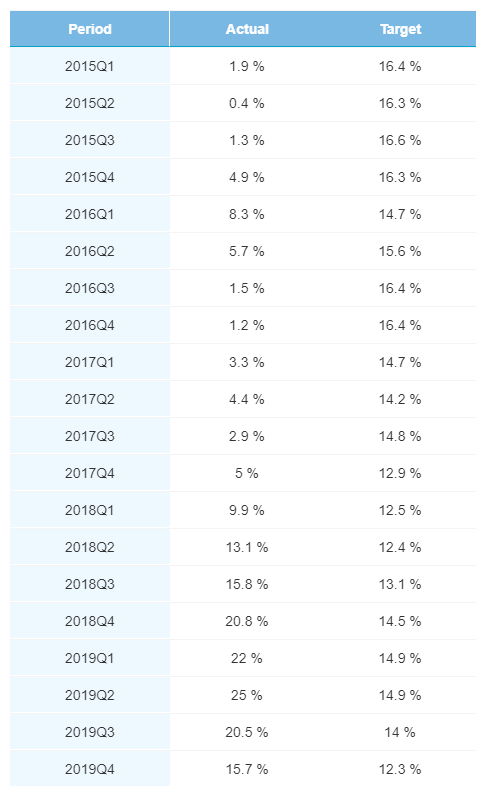
Finland
Returns for the most recent quarter in Finland were almost identical to March, coming in at 6.41% for C rated loans, and 13.33% for E rated loans.
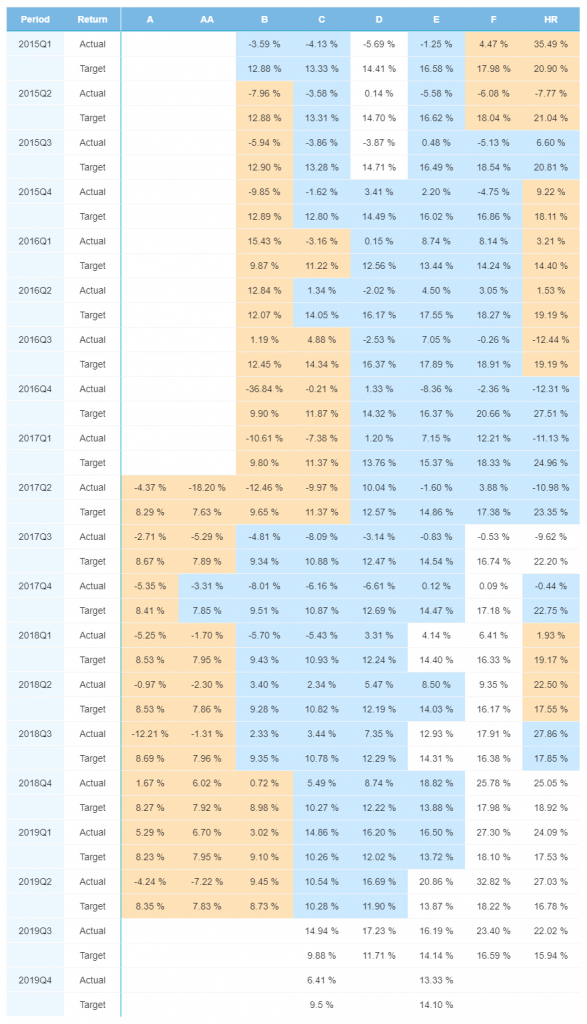
Estonia
Both A and B rated loans were unchanged from a month ago, returning 7.36% and 11.18% respectively. A rated loans have performed especially well over the past several quarters, coming in at the same return rate, or even higher, compared to last month.
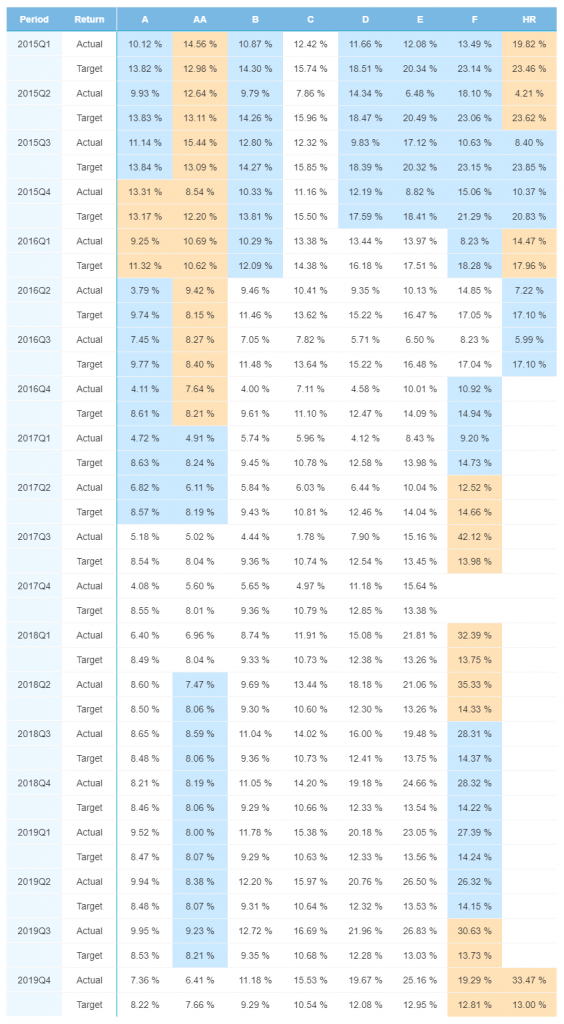
Spain
C rated loans in Spain actually grew their return rate for the past two quarters compared to March. In Q4 2019, returns for C rated loans went from 13.39% to 13.79% in April. In Q3 of last year the return rate also grew slightly, up from 6.93% to 6.94%.
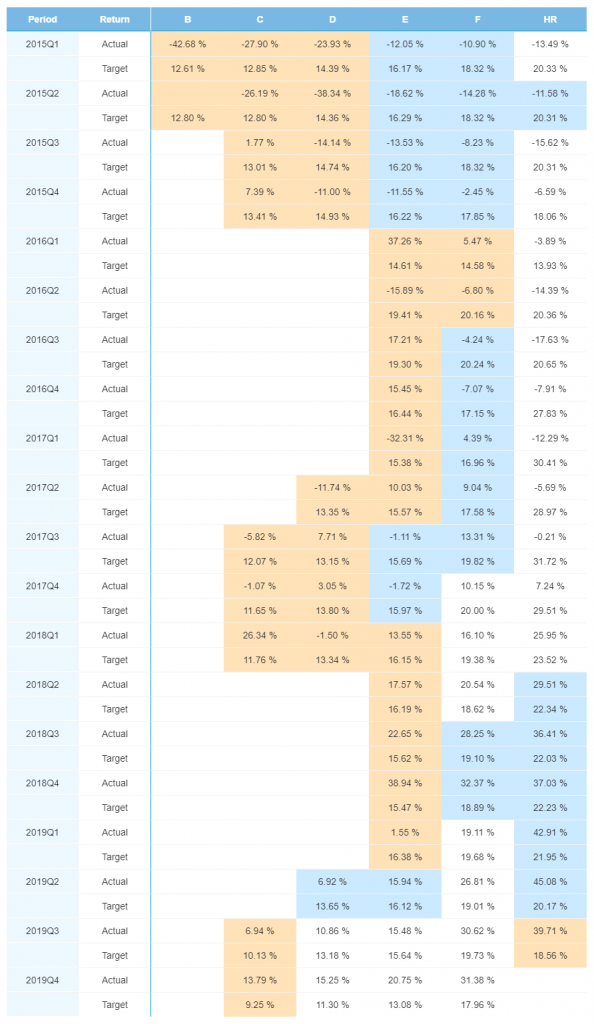
Economic News
Finland has been exceptionally quick at converting their workforce into stay-at-home employees. All told, the EU has shifted 37% of its employees to remote work in the past several months, while Finland has moved 60% of its workforce to working from home, the highest number in the region. This bodes well for the nation’s economy, which is able to maintain higher levels of employment and productivity even during times where mobility is difficult.
The Estonian government has decided to throw a lifeline to one of the country’s biggest companies. A three-year, €100 million working capital loan has been issued to AS Tallink Grupp, the Estonian shipping giant, by the Estonian government. The loan became a necessity for the country’s government as Tallink is a vital part of its economy and was unable to obtain financing from other sources.
Italy is doubling its existing economic stimulus plan. It is expected to pass a package worth a minimum of €50 billion to combat a looming economic recession. This funding would come on top of the already €25 billion already used to support the nation’s economy.
One thing that could support a restart to Europe would be a summer tourist season, something that the European Union is promising will go on as planned. Obviously, any tourism would come with its challenges, but EU officials are optimistic that tourists will be allowed to travel throughout the region. “Our message is we will have a tourist season this summer,” said economic affairs commissioner Paolo Gentiloni, “even if it’s with security measures and limitations.” One idea presented is to allow for travel corridors in Europe where citizens can travel through neighboring countries with little to no restriction. One proposed corridor is Austria, Germany, and Czech Republic, with another being Estonia, Latvia, and Lithuania.